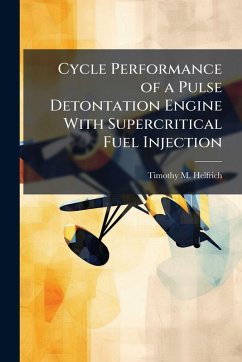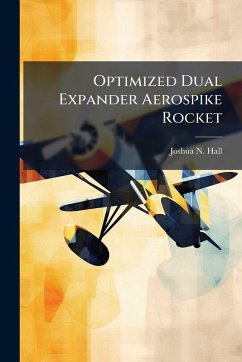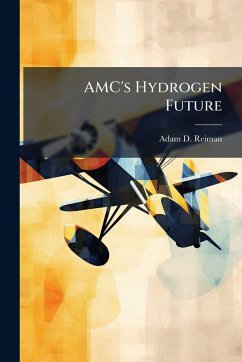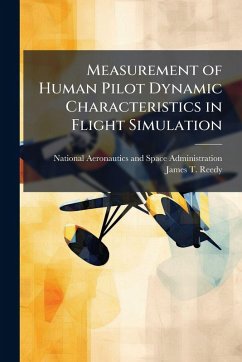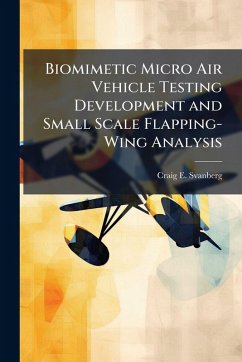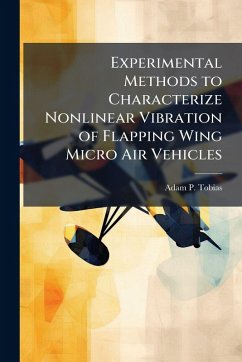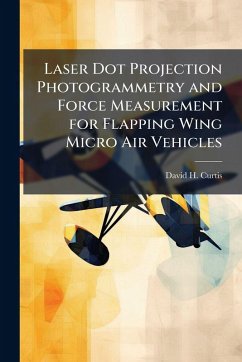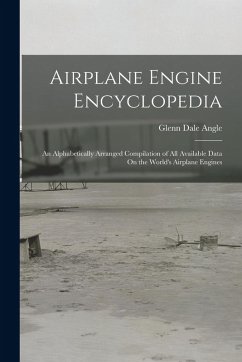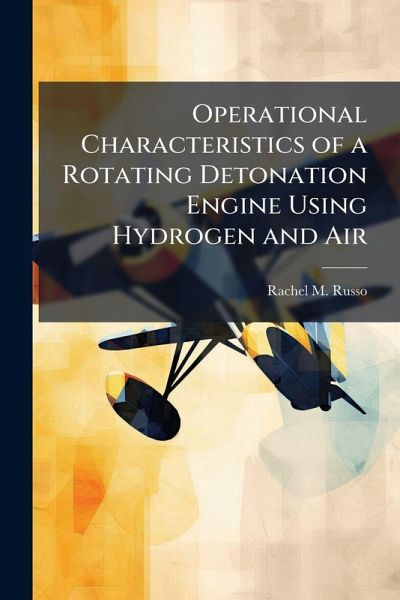
Operational Characteristics of a Rotating Detonation Engine Using Hydrogen and Air
Versandkostenfrei!
Versandfertig in über 4 Wochen
17,99 €
inkl. MwSt.
Weitere Ausgaben:

PAYBACK Punkte
9 °P sammeln!
Rotating detonation engines (RDE) are pressure gain combustion engines that have the potential for greater efficiency than traditional, constant pressure, deflagration engines. RDEs are smaller and mechanically simpler than pulsed detonation engines. A small diameter (3 in) engine was successfully run on hydrogen and air. Most of the tests were conducted using air with a slightly lower diluents percentage (77% nitrogen as opposed to 79% nitrogen). These tests provided the foundation for determining the operational space (mass flow rate and equivalence ratio) of the rotating detonation engine. ...
Rotating detonation engines (RDE) are pressure gain combustion engines that have the potential for greater efficiency than traditional, constant pressure, deflagration engines. RDEs are smaller and mechanically simpler than pulsed detonation engines. A small diameter (3 in) engine was successfully run on hydrogen and air. Most of the tests were conducted using air with a slightly lower diluents percentage (77% nitrogen as opposed to 79% nitrogen). These tests provided the foundation for determining the operational space (mass flow rate and equivalence ratio) of the rotating detonation engine. From the tests conducted with the lower diluents air, the appropriate run conditions for regular air were determined. For standard air (79% nitrogen) it was found that a larger equivalence ratio (about 1.5) was required to obtain continuous detonations. This work has been selected by scholars as being culturally important, and is part of the knowledge base of civilization as we know it. This work was reproduced from the original artifact, and remains as true to the original work as possible. Therefore, you will see the original copyright references, library stamps (as most of these works have been housed in our most important libraries around the world), and other notations in the work. This work is in the public domain in the United States of America, and possibly other nations. Within the United States, you may freely copy and distribute this work, as no entity (individual or corporate) has a copyright on the body of the work. As a reproduction of a historical artifact, this work may contain missing or blurred pages, poor pictures, errant marks, etc. Scholars believe, and we concur, that this work is important enough to be preserved, reproduced, and made generally available to the public. We appreciate your support of the preservation process, and thank you for being an important part of keeping this knowledge alive and relevant.



